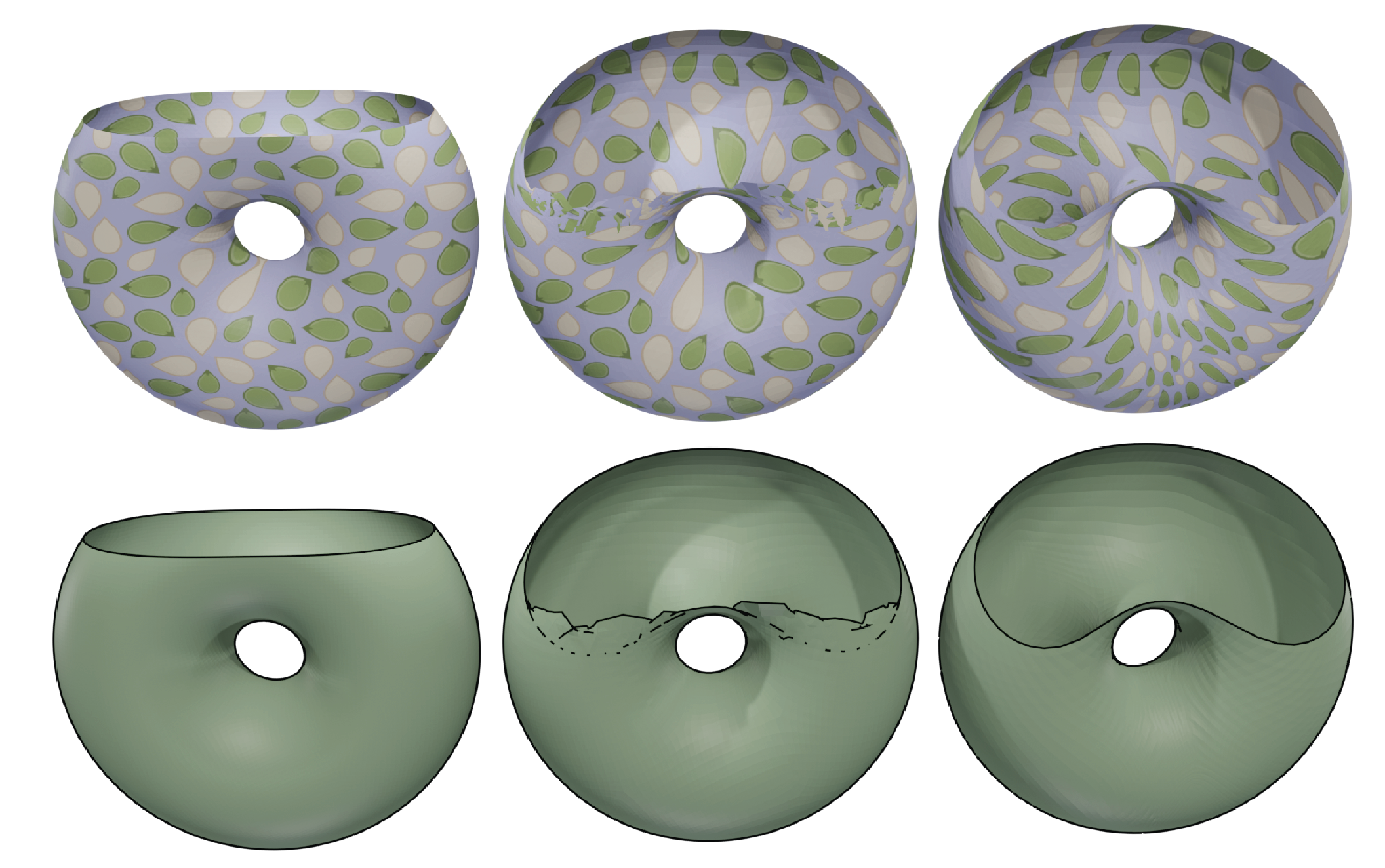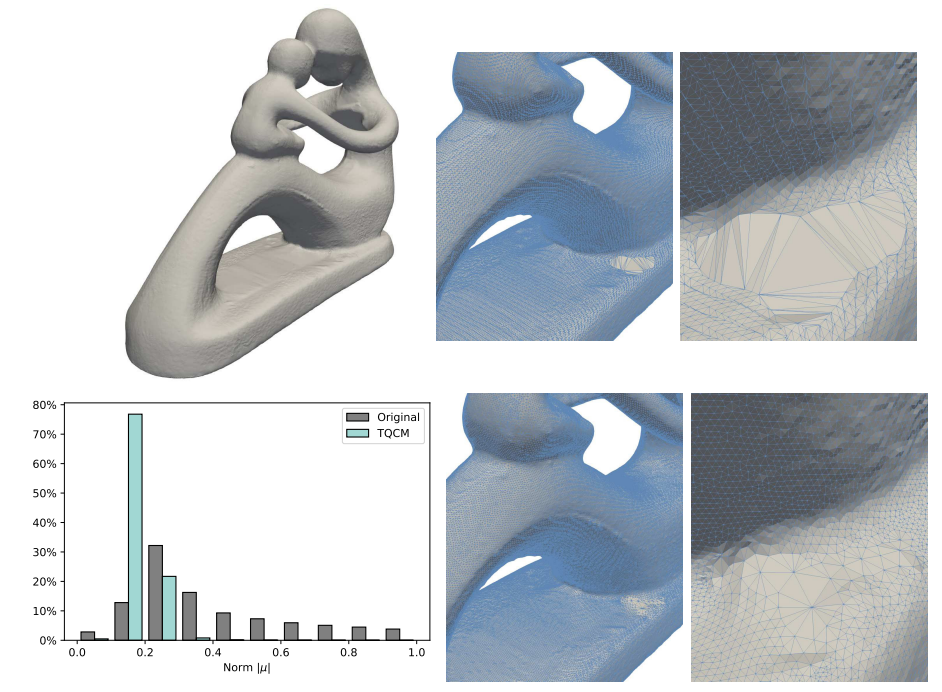Quasiconformal Mappings for Surface Mesh Optimization

Recall that a quasiconformal map \(f:M \to P\) between Riemann surfaces is an orientation-preserving homeomorphism with bounded conformality distortion. In a local conformal coordinate \(z:U \to M\) such that \(g=\sigma\nn{dz}^2\) for some positive function \(\sigma:U \to \mathbb{R}\), quasiconformality implies the Beltrami equation,
\[\bb{f}_{\zbar} = \mu\,\bb{f}_z,\]where \(\bb{f}_z = \partial_z f\) (resp. \(\bb{f}_{\zbar} = \partial_{\zbar} f\)) are the partial derivatives of the mapping \(f\) and \(\mu:U \to \mathbb{C}\), is the locally defined Beltrami coefficient. Geometrically, the Beltrami equation implies that quasiconformal maps take small circles on the source space to small ellipses of bounded eccentricity on the target.
![]()
In this work, we apply quaternionic surface theory to form a global analogue of the local Beltrami equation, which enables a new algorithm for computing quasiconformal maps from Riemann surfaces into \(\mathbb{R}^3\). In particular, recall that \(f: M \to \mathbb{R}^3\) is said to be conformal provided it maps oriented orthogonal bases of \(TM\) to oriented orthogonal bases of \(df(TM)\), i.e. if and only if
\[\ast df = N\, df,\]where \(\ast df = df \circ J\) is the negative Hodge star operator and \(N\) is the Gauss map of the immersion \(f\). This gives a splitting of differential one-forms on \(TM\) into conformal and anticonformal parts, enabling the coordinate-free Beltrami equation
\[\mm{df} = \pp{df} \circ \mu,\]where \(\mu: TM \to TM\) is a measurable complex-antilinear mapping and
\[df^{+} = \frac{1}{2}\left(df - N \ast df \right), \qquad df^{-} = \frac{1}{2}\left(df + N \ast df \right).\]For explicit computation, note that \(\mu\) has the dual interpretation as a normal valued quaternionic function \(\mu = a + bN\) at each point, so that we can write
\[\mm{df} = \mu\,\pp{df},\]which looks very much like the classical Beltrami equation. Using this, we develop an algorithm for computing dilatation-optimal quasiconformal mappings (i.e. Teichmüller maps) based on the Quasiconformal Iteration of Lui et al. (2012). More precisely, the idea of our algorithm is to minimize the quasiconformal distortion
\[\mathcal{QC}_\mu(f) = \int_M \nn{\mm{df} - \mu\,\pp{df}}^2 dS_g,\]through the alternative minimization of \(f\) and \(\mu\). At a high level, the algorithm is
- Compute \(f_k:M\to\mathbb{R}^3\) given \(\mu_k\).
- Compute \(\nu_{k+1}\) given \(f_k\).
- Post-process \(\nu_{k+1}\) to bring it closer to \tm form, generating \(\xi_{k+1}\).
- Minimize \(\mathcal{QC}_{\mu}(f_k)\) on the line between \(\mu_k\) and \(\xi_{k+1}\), generating $\mu_{k+1}$.
Through this, we are able to produce high-quality quasiconformal mappings without requiring a local parametrization of the surface! Some examples are below.


A messy implementation of our algorithm can be found on my code page.
Relevant Publications
Anthony Gruber, Eugenio Aulisa. Quasiconformal Mappings for Surface Mesh Optimization. Preprint version available here.
